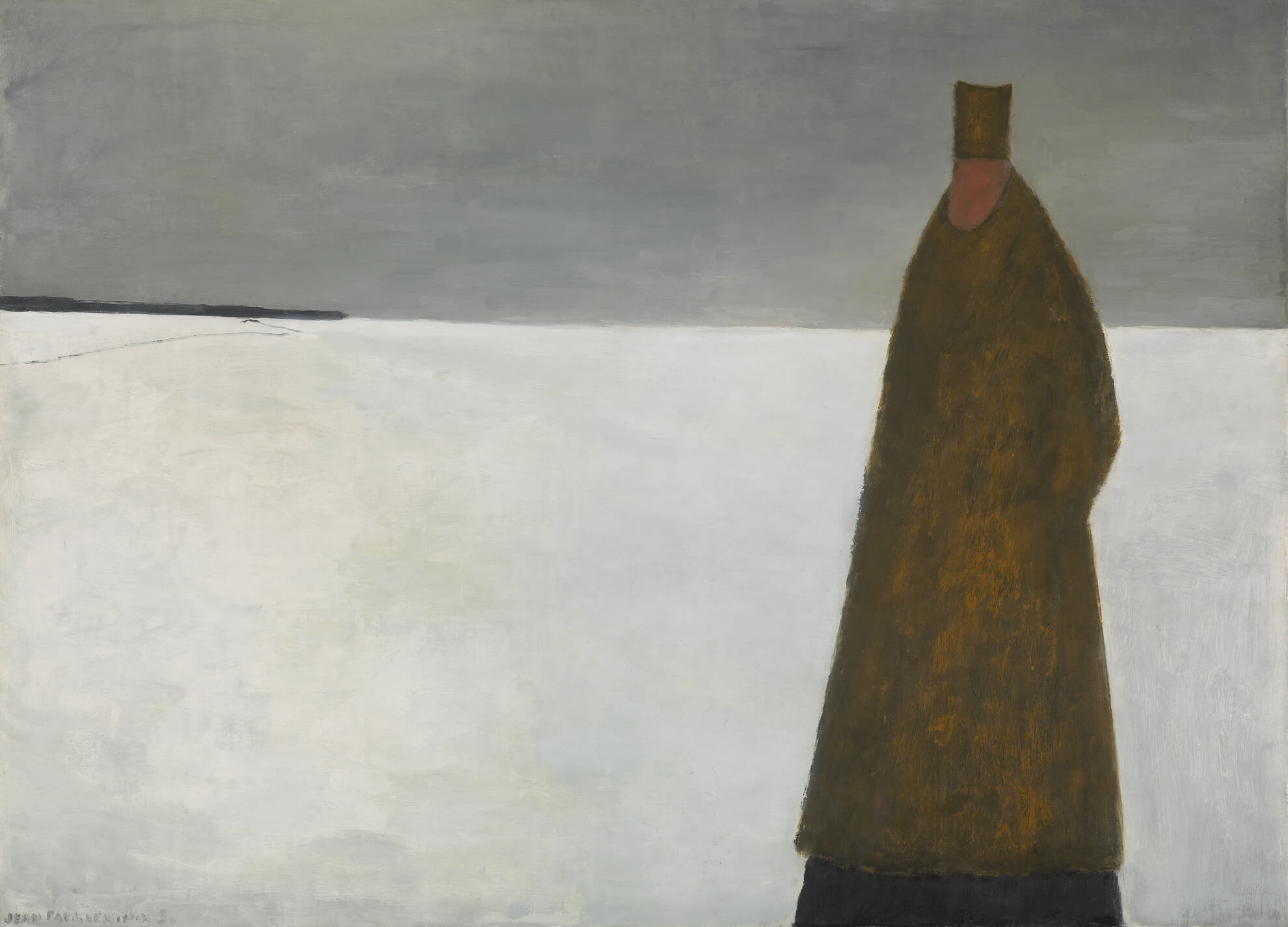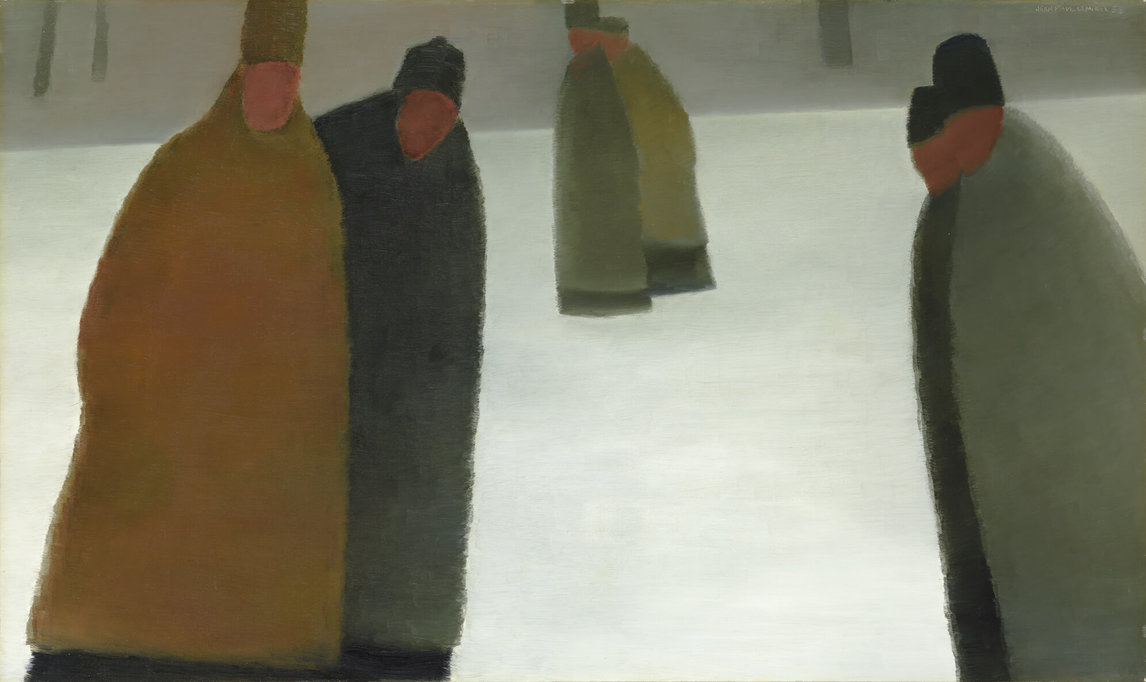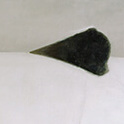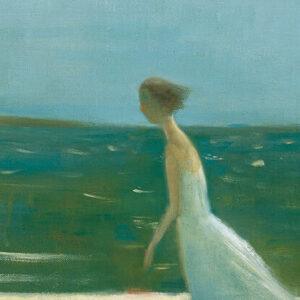The Evening Visitor 1956

Jean Paul Lemieux, The Evening Visitor (Le visiteur du soir), 1956
Oil on canvas, 80.4 x 110 cm
National Gallery of Canada, Ottawa
This image has haunted the collective imagination of Canadians for almost sixty years. Lemieux painted it in 1956, just after his return from a visit to France that had led him to question his perception of the landscape. From this point on, winter and vast, snowy spaces would serve as the background to empty terrain, traversed by universal, silent, anonymous human figures. “From 1956 on … I no longer saw things the same way. A totally different vision was developing in me, a vision that was above all horizontal, which I had never experienced before; until then I had never noticed how horizontal our country is. And I had to leave the country to realize it. They say you have to go elsewhere to discover yourself, and it’s true.”
The Evening Visitor is among the first paintings to offer evidence of this new approach, which characterizes his classic period (1956–1970). A high, slightly inclined horizon line divides the vast, deserted white plane of snow from the grey plane of the sky. On the left a narrow, dark band advances along the horizon, evoking dense forest. A thin line made with a delicate brushpoint traces a single road leading to the forest. On the right a mysterious, dominant figure rises up in the absolute stillness of winter.

Who is this evening visitor, wrapped up in his heavy raccoon coat and fur toque? The man, whose face has no features, is not recognizable at first glance. After a moment we see the black soutane below the heavy coat and understand that he is a priest. What is he doing here at nightfall, in this immensity, in the freezing cold of winter? Lemieux has stated that “the evening visitor is simply death. In Quebec we always see him in the guise of a priest who comes to administer the sacrament of the last rites as the evening of life approaches.”
It is worth mentioning that these and other pictures of snow, like The Priests’ Promenade (La promenade des prêtres), 1958, characteristic of Lemieux’s classic period, echo a reflection he jotted in a notebook in 1939: “Snow. Snow and cold. Snow everywhere in the fields, in the forest … the river is frozen and so are the streams…. All things seemed to have died and a stuck silence accompanies always the flake.”

 About the Author
About the Author
 More Online Art Books
More Online Art Books
 Acknowledgements
Acknowledgements